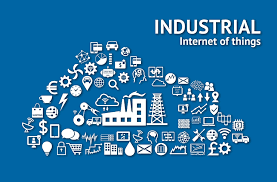I recently came across an EETimes article on the Industrial IIOT. The article focused on the use of wearables in Industrial Internet of Things (IIOT) setting. We tend to think of wearables as items like the Fitbits used to track our fitness. In the IIOT sphere, it’s “smart glasses, wristbands, body sensors, and even smart clothing” that humans use to interact with machines and processes.
The IIOT applications where wearables include those in hazardous situations where safety is critical. Think of wearables equipped with sensors to monitor whether the wearer has been exposed to dangerous, potentially fatal, gases. Operational efficiency is another application area. Smart glasses, for example, could enable workers to read product manuals or access operating status info, hands-free, in real time.
There are plenty of challenges:
Privacy concerns, data security, and the need for robust infrastructure to handle the vast amounts of data generated are significant hurdles. Additionally, ensuring the wearables are comfortable and intuitive for workers to use is crucial for their adoption.
These challenges are surmountable. Technological advances will result in wearables that are “more powerful, efficient, and affordable, leading to wider adoption.”
There’s more to the IIOT than wearables, of course, and Tech Target has good overview of the Industrial Internet of Things (written by Alexander Gillis, Brien Posey, and Linda Rosencrance). They start with a simple definition:
The industrial internet of things (IIoT) is the use of smart sensors, actuators and other devices, such as radio frequency identification tags, to enhance manufacturing and industrial processes. These devices are networked together to provide data collection, exchange and analysis. Insights gained from this process aid in more efficiency and reliability. Also known as the industrial internet, IIoT is used in many industries, including manufacturing, energy management, utilities, oil and gas.
Then there’s this bit, which I loved:
IIoT uses the power of smart machines and real-time analytics to take advantage of the data that dumb machines have produced in industrial settings for years.
The underlying driver: when it comes to capturing, analyzing, and communicating about key data, smart machines are just plain better than humans. Even smart humans.
Connected sensors and actuators enable companies to pick up on inefficiencies and problems sooner, saving time and money while also supporting business intelligence efforts. In manufacturing specifically, IIoT has the potential to provide quality control, sustainable and green practices, supply chain traceability and overall supply chain efficiency. In an industrial setting, IIoT is key to processes such as predictive maintenance, enhanced field service, energy management and asset tracking.
The article then goes into the components that comprise the IIOT, including “cloud platforms… edge gateways, sensors, actuators, and edge nodes;” lists the many different industries (automotive, agriculture, oil and gas, utilities) where the IIOT is deployed; and goes on to describe the benefits, risks, and challenges.
The authors also provide a few thumbnail use cases :
…commercial jetliner maker Airbus launched what it calls the factory of the future, a digital manufacturing initiative to streamline operations and boost production. Airbus integrated sensors into machines and tools on the shop floor and outfitted employees with wearable tech — e.g., industrial smart glasses — aimed at reducing errors and enhancing workplace safety.
Another robotics manufacturer, Fanuc, has used sensors in its robotics, along with cloud-based data analytics, to predict the imminent failure of components in its robots. Doing so enables the plant manager to schedule maintenance at convenient times, reducing costs and averting potential downtime.
Magna Steyr, an Austrian automotive manufacturer, is using IIoT to track its assets, including tools and vehicle parts, as well as to automatically order more stock when necessary.
The IOT has become so much a part of our daily lives – sometimes, admittedly, in fairly trivial ways. It’s good to be reminded that the IIOT is out there as well, changing the way many industries work.
Image source: i-SCOOP
